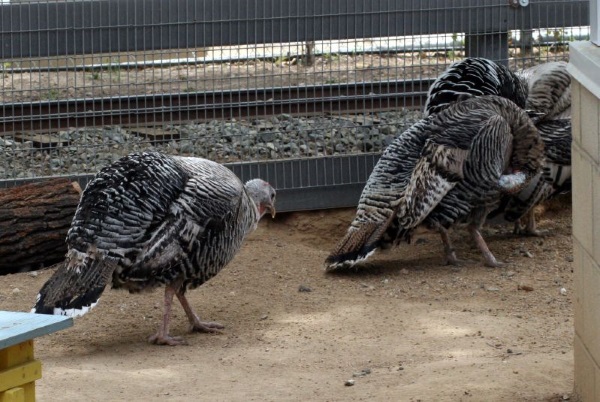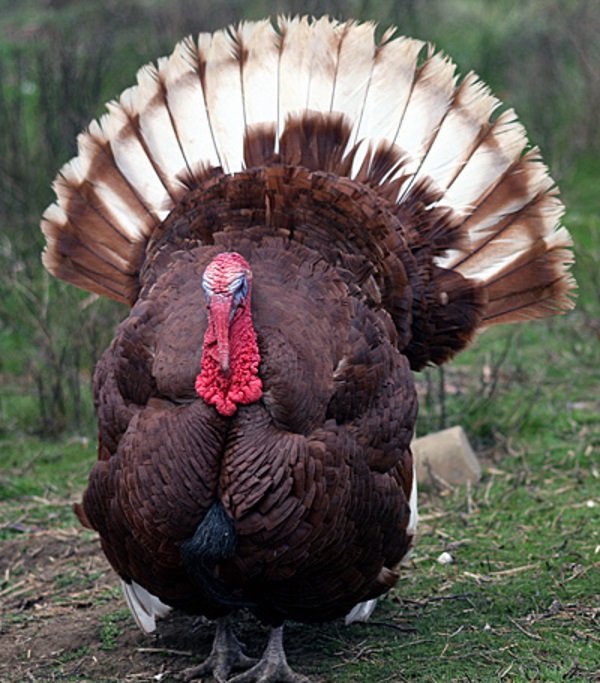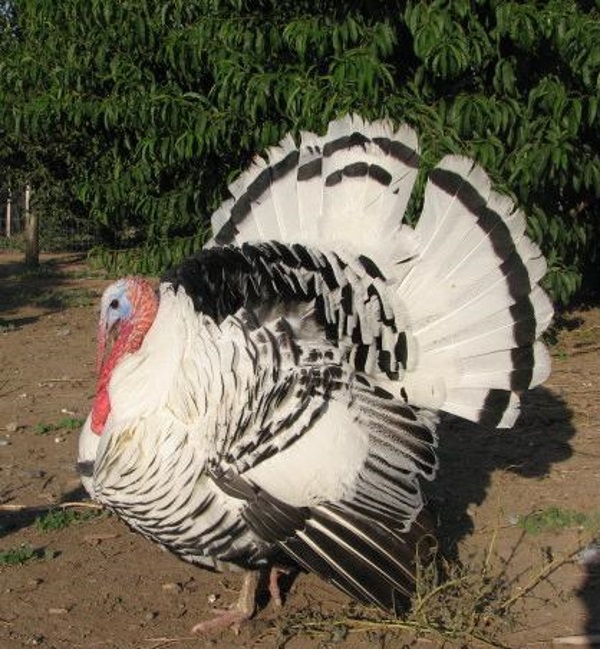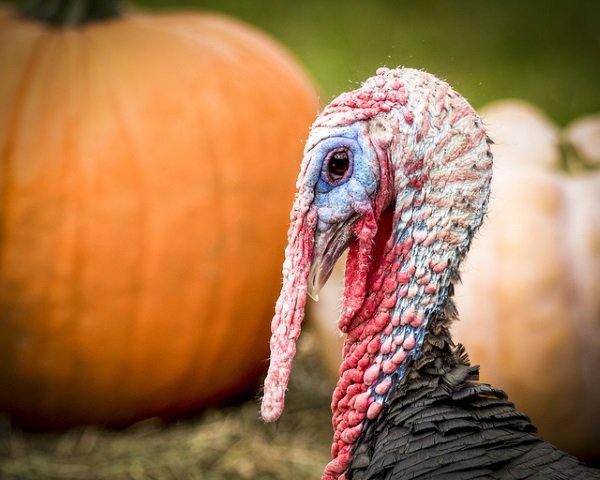Slate Turkey

Slate Turkeys were once thought to have arisen from crossing Black Spanish Turkeys and White Holland Turkeys. However, the first Slate Turkeys actually came about by way of two distinct genetic mutations: one dominant and one recessive. Each Slate Turkey’s coloration can vary depending on which gene is responsible, though in general their feathers are an ashy “blue” hue with randomly distributed black flecks. As such, Slate Turkeys are also occasionally referred to as Blue, Lilac or Lavender Turkeys.
Slate Turkeys have not been commercially bred for some time and the breed is currently listed as “Watch” on the America Livestock Breeds Conservancy’s Conservation Priority List. This designation marks Slate Turkeys as being globally endangered, with fewer than 5,000 breeding birds spread over 10 or fewer primary breeding flocks currently extant in the United States. (Image via Flickr member Jean)
Bourbon Red Turkey

If the “Bourbon” in this heritage turkey breed’s name makes one think of Kentucky, that’s no coincidence. These distinctive turkeys originated in Kentucky and Pennsylvania as a result of crossing Buff, Standard Bronze and White Holland Turkeys. We’ll drink to that!
By the late 19th century, Bourbon Reds were well-established as a distinct breed and were formally recognized by the American Poultry Association as such in 1909. (Image via Flickr member Marji Beach)
Royal Palm Turkey

The Royal Palm Turkey stands out… and not just by virtue of its striking white-with-metallic-black plumage! Royal Palms are the most recent (in 1971) heritage breed to be formally recognized by the American Poultry Association’s Standard of Perfection. The Royal Palm’s first appearance was in the 1920s when a farmer in Lake Worth, Florida made attempts to blend the genetics of Black, Bronze, Narragansett and native birds.
The American Livestock Breeds Conservancy categorizes the Royal Palm Turkey as “critical” on its watchlist, indicating the highest conservation priority. This status was bestowed due to a number of factors, including the relatively recent origin of the breed plus the fact that it has always been an ornamental bird and not developed for commercial farming. Owners generally report their Royal Palm toms as being friendly and those who raise them note that females are unusually attentive mothers. (Image via Flickr member Oregon Department of Agriculture)
All images in this article have been graciously made available by the individually-attributed photographers under a Creative Commons international license.





